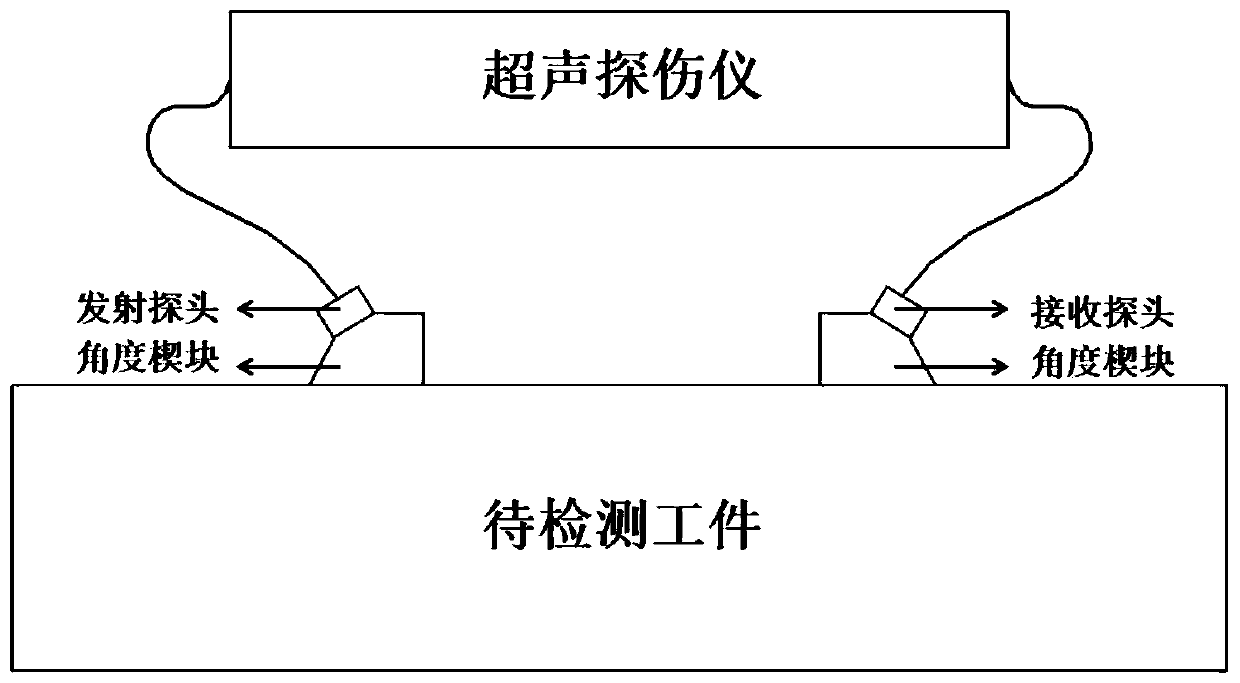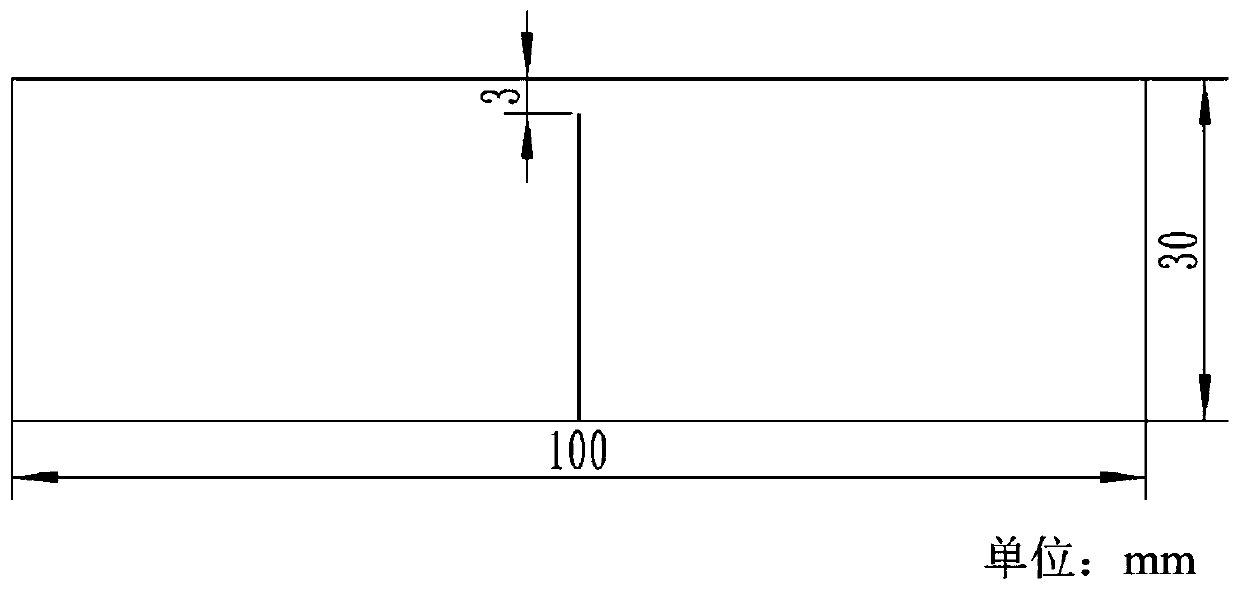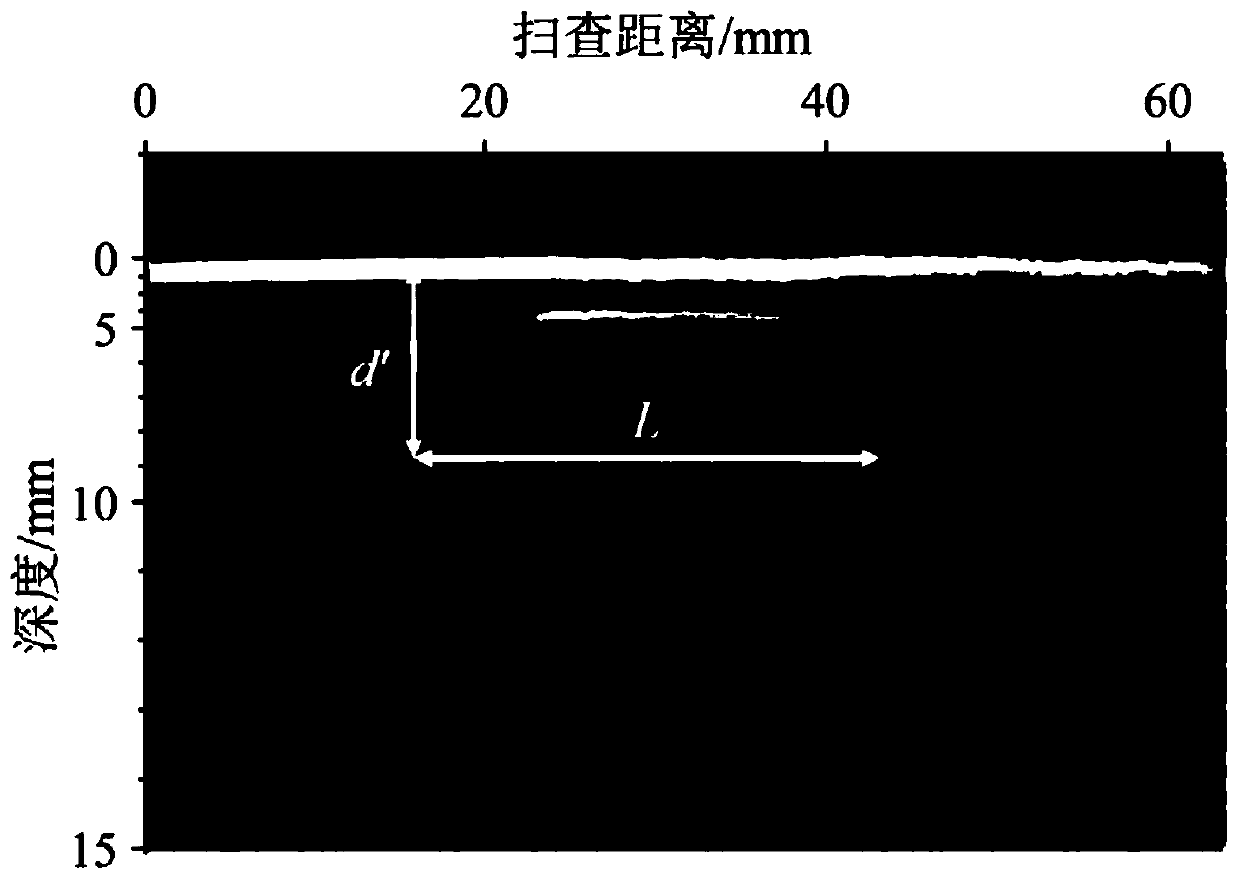Ultrasonic TOFD dead zone inhibition method based on synthetic aperture focusing and mode converted wave
A technology of synthetic aperture focusing and mode conversion, which is applied to the analysis of solids using sound waves/ultrasonic waves/infrasonic waves, the use of sound waves/ultrasonic waves/infrasonic waves for material analysis, and the processing of detection response signals to improve quantitative accuracy of defects, suppress TOFD blind spots, The effect of improving image quality
- Summary
- Abstract
- Description
- Claims
- Application Information
AI Technical Summary
Problems solved by technology
Method used
Image
Examples
Embodiment Construction
[0034] Ultrasonic TOFD blind area suppression method based on synthetic aperture focusing and mode conversion wave, the ultrasonic detection system used is such as figure 1 As shown, it includes an ultrasonic flaw detector, a pair of TOFD probes, a pair of longitudinal wave angle wedges and a scanning device. The specific detection and processing steps are as follows:
[0035] (a) Test subjects such as figure 2 The carbon steel plate test block shown has a wall thickness of 30.0mm, a longitudinal wave sound velocity of 5890m / s, and a transverse wave sound velocity of 3230m / s. The inside of the test block is processed with an open groove on the bottom surface 3.0mm away from the surface.
[0036] (b) The TOFD probe with a nominal frequency of 5 MHz is used for detection. The main detection parameters include: longitudinal wave wedge angle 70°, probe center distance 2S = 30.0mm, sampling frequency 100MHz, detection gain 60dB, scanning step ΔS = 0.40mm, A-scan time window star...
PUM
 Login to View More
Login to View More Abstract
Description
Claims
Application Information
 Login to View More
Login to View More - R&D
- Intellectual Property
- Life Sciences
- Materials
- Tech Scout
- Unparalleled Data Quality
- Higher Quality Content
- 60% Fewer Hallucinations
Browse by: Latest US Patents, China's latest patents, Technical Efficacy Thesaurus, Application Domain, Technology Topic, Popular Technical Reports.
© 2025 PatSnap. All rights reserved.Legal|Privacy policy|Modern Slavery Act Transparency Statement|Sitemap|About US| Contact US: help@patsnap.com



